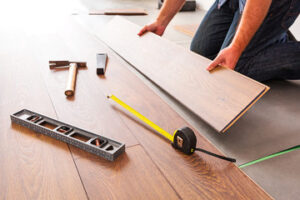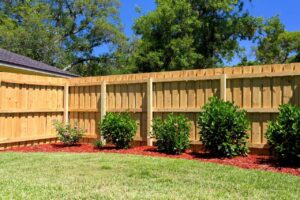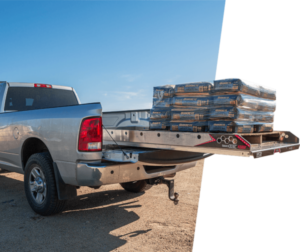Handyman Lexington KY helps people with a variety of home improvement tasks. The handyman can refer the customer to a specialist if the job is too large or requires specialized knowledge.
A handyperson can work in both commercial and residential settings. There is no formal education required to become a handyman.

Drywall is a great home choice because it offers a cost-effective alternative to wooden or concrete walls and gives rooms a modern look. However, it isn’t indestructible and can be damaged by several factors, from a run-in with the vacuum cleaner to a child flinging a toy at it. Luckily, fixing drywall damage isn’t difficult or expensive.
A spackle or joint compound and a putty knife can repair small holes and dents. Apply a thin filler coat to the hole and smooth it with the knife, then sand the surface until it’s even with the rest of the wall. Allow the filler to dry and re-sand if necessary. Then, touch up with paint if desired.
Larger holes may need to be patched with a drywall patch kit. If you choose this option, carefully follow the instructions on the package. It’s also important to ensure that no electrical or plumbing lines run through the area before attempting a repair. If you don’t spot these hazards, you could end up with a hole that leaks or supports mold growth.
If your drywall has been compromised by water or other environmental factors, it must be addressed immediately. Unaddressed moisture issues can lead to mold growth, structural deterioration, and rot. Handypersons who specialize in drywall repair and replacement can quickly and efficiently address these issues to protect your home.
Even minor drywall blemishes can detract from your walls’ overall appearance, so it’s essential to touch them before painting. However, completing this task requires much knowledge, precision, and skill and can be time-consuming and frustrating for novice DIYers. Professional handypersons have the skills and tools to get the job done quickly, safely, and with a professional finish.
Drywall contributes to your home’s insulation, fire resistance, and structural integrity. Regular inspections can catch any deterioration or problems early and help prevent serious damage. By making these repairs quickly and properly, you’ll enjoy the peace of mind of knowing your home is in good condition.
Handypersons are jack-of-all-trades—or at least that’s how they’re often portrayed in popular culture. Handymen have no formal training or licensure, but they know enough about carpentry, plumbing, electrical work, and many other trades to tackle a wide range of small- to medium-sized home projects and repairs.
They’re also familiar with a wide range of tools, and many handypersons have a toolbox filled with various items, from hand tools to power tools and everything in between. When asked to take on a project that falls into this category, they know exactly what the job entails and can complete it quickly and correctly.
When hanging a TV, there are a few key things that the handyperson must keep in mind. First, the TV must be mounted to a secure wall. This is important for security and ensuring that the TV doesn’t fall down in a storm or during a party. It’s best to mount the TV over a solid stud, like a fireplace mantel. The next step is deciding how high to mount the TV. If you do this carefully, the TV may stay high enough, making it easier to watch. To avoid this, having a friend help you and using a spirit level to ensure the TV is at a comfortable viewing height is best.
After drilling the pilot holes, it’s time to attach the mounting plate to the wall. Again, having a friend to assist you with this is a good idea since it can take a lot of work to do independently. It’s also a good idea to carefully read the directions on the wall mount, as they can vary slightly from one product to another.
Once the mount is attached, you can hang the actual television. Again, this task is better done with a friend, as lifting the TV without damaging it can be tricky. It’s also a good idea at this point to double-check the positioning of the TV and to tighten all of the screws on the brackets to make sure that they are securely in place.
Whether you have wood flooring in your home or an industrial warehouse, floors must be well-maintained. Having a floor that looks good is not only pleasing to the eye, but it can also help a business run more efficiently. Hiring a handyperson can be an inexpensive repair method if your floors are damaged.
Before you start a repair, read the manufacturer’s maintenance guide to ensure you use a product compatible with your floor type. For example, if you have laminate flooring, you should use a repair kit with wood filler, putty, or a floor repair marker. The color of the repair product will need to match the color of your laminate flooring. When applying the patch, work in small areas so the color does not show too much.
Using gloves, goggles, and a mask when working with power tools is recommended to protect yourself from chemical burns, sharp edges, and inhaling fumes. It is also important to work in a well-ventilated area. A mask can also protect you from breathing in dust or other debris created while the project is completed. Using a fan to blow any dust away from the work area would be best.
Flooring repair can include sanding and staining to restore the appearance of your floors. Depending on the type of floor, this may consist of sanding to remove scratches and stains and staining to add color and protection. If the sanding process is done correctly, it will leave a smooth finish that will look great in your home or office.
You can also fix squeaky floors by placing shims or lumber under the offending planks to prevent them from moving up and down and rubbing against one another. It is important to ensure the shim is secure and short enough, as this will cause the floor to become uneven and unsteady.
It is possible to replace a floorboard independently, but you must know the proper techniques to avoid destroying other boards in your home or workplace. Start by locating the end and edge of the floorboard that needs to be replaced. Then, measure about an inch into the board from both the edge and end of the room to protect other boards from being cut during the replacement process.
Many electrical components need to be repaired from time to time. These include outlets, switches, and fixtures. When one isn’t working correctly, it can cause a short circuit. This can result in a fire or other damage to your home. It is important to have these issues fixed as soon as possible.
To repair these problems:
- Start by checking the breaker box for any blown fuses or tripped breakers.
- Look at the information card to determine which receptacles, appliances, or lighting fixtures are on that particular circuit.
- Disconnect anything that’s unnecessary and inspect those you can’t disconnect for any signs of malfunction.
If you cannot and you need help fixing the problem yourself, hire an experienced handyperson who can do the job for you. Ensure they have a license and insurance in case of any accidents that may occur while fixing your electrical equipment.
You should also make sure to inspect and clean your electrical panels regularly. This will help keep them free of dust, debris, and corrosion. Additionally, you should avoid storing items near these panels and minimize heat buildup in rooms with them. By doing these simple things, you’ll help ensure your family’s and home’s safety.








